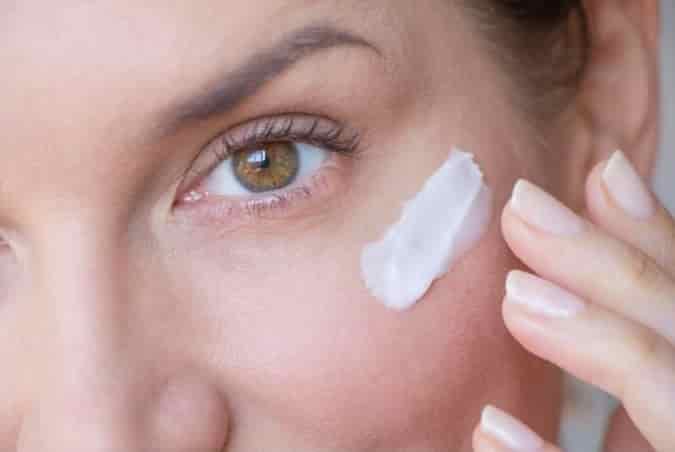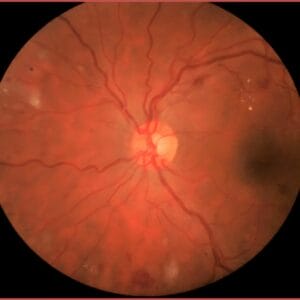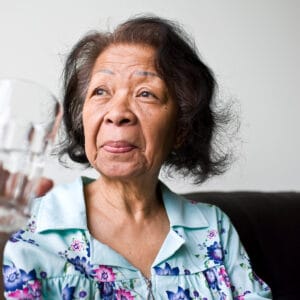October 23, 2023
Once eye care professionals know how they should address aesthetics for their patients, the next logical question that patients always ask me is, “Great, Dr. McGee, you’ve given me what I can’t do. Do you have a solution for what I can use?” Indeed, I do, and by no means is this list exhaustive in Table 1, but it should put you on the right track. As you learn more just continue to build it out and share it with us.
| Not This | Use This Instead |
| Prostaglandin Analog-Isopropyl Cloprestonate | Polypeptide/Lipopeptide lash conditioner |
| Waterproof mascara | Non-waterproof* |
| Glitter eye shadows | Shimmer/matte eye shadows-sticks can keep it in place vs. powder |
| Retinol – if dry eye dx then don’t use. If no dry eye dx, then can use, but stay two finger widths away from eyelid margin to avoid migration. MUST USE SUNSCREEN (See section on “Why sunscreen is essential.”) | Caffeine, vitamin C, vitamin E, ferulic, hyaluronic acid, niacinimide |
| False lash strips with latex and formaldehyde | Individual false lashes with non-formaldehyde and latex lash glue |
| Eyelash extensions | Individual false lashes with non-formaldehyde and latex lash glue |
| Oil-based eye-makeup remover cleansers | Micellar Water* |
| Eyeliner on the water line | Eyeliner on the dry side* |
Table 1. Best replacements for naughty beauty habits and ingredients.
Why Sunscreen is Essential
One of the easiest topics to discuss is sunscreen and sunglasses. Sunscreen is a fundamental component of any skin care routine. Did you know that the eyelid is the most common place on the body to get skin cancer? It’s so important for your patients to invest in ophthalmic sun lenses to protect from cataracts, macular degeneration, and skin cancer. Talk to your patients every time you evaluate their lids about the importance of protection. You know all there is to know about sun lenses, so let’s shed some light on sunscreen. Sunscreen should be non-negotiable. It protects against skin cancer,1 but it also protects against pesky pigmentation and helps prevent premature aging.2
The American Academy of Dermatology recommends that sunscreen should be at least SPF 30. I personally recommend SPF 50 to my patients, broad spectrum (UVA and UVB), and water resistant. I often utilize a tinted sunscreen that can be in place of foundation, or some of my patients use it as base and add their foundation too. There are two types of sunscreens. Chemical sunscreens work like a sponge, absorbing the sun’s rays. They contain one or more of the following active ingredients: oxybenzone, avobenzone, octisalate, octocrylene, homosalate, and octinoxate. These formulations tend to be easier to rub into the skin without leaving a white residue. However, there have been studies that show these ingredients show up in the blood stream after one day of application.2 More studies are needed to understand the significance of this information. Physical sunscreens work like a shield, sitting on the surface of your skin and deflecting the sun’s rays. They contain the active ingredients zinc oxide and/or titanium dioxide. This is what I recommend to patients. An interesting note also about sunscreens is current FDA regulations on testing and standardization do not pertain to spray sunscreens. As a mom of two, I have moved away from spray sunscreens.
The Truth About Skin Care Routines
The delicate skin around the eye deserves proper skin care that protects and nourishes it. What does a skin care routine actually do? A comprehensive routine cleanses, hydrates, exfoliates, and evens out skin tone. That is all a skin care routine does. It does not remove wrinkles, eye bags, or accomplish other marketing claims. It’s important to separate fact from fiction.
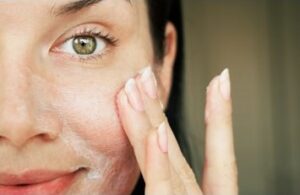
The way the aging process happens isn’t fully understood, but there is evidence that oxidative stress plays a role. Reactive oxygen species (ROS) does increase with age, sun exposure, smoking, pollutants, genetics, autoimmune diseases, and other lifestyle factors. When there is too much oxidative stress, there is an increase in free radicals, and antioxidants cannot fully neutralize this effect, creating an imbalance. This imbalance is when ROS are produced. ROS are highly unstable and reactive molecules and can have detrimental effects on the body. We see this in patients with AMD, DED, and in aging skin.
How Antioxidants and Retinoids Are Helpful
Antioxidants are substances that delay or prevent oxidative damage caused by the presence of ROS. Literature supports the use of antioxidants in patients with moderate AMD. There is also evidence that shows benefits topically to the skin. Vitamin C or L-ascorbic acid is an efficient water-soluble antioxidant that can neutralize free radicals both intracellularly and extracellularly. Vitamin E or a-tocopherol is a lipophilic antioxidant that serves as a protective agent for different components of the skin.

Lin et al. reported the combination of 15% L-ascorbic acid and 1% a-tocopherol provided a fourfold photoprotection for the skin against erythema and sunburn cell formation. This synergistic effect alongside ferulic acid doubled photoprotection. There are commercially available combinations for patients. Other ingredients that have evidence-based improvement are niacinamide (vitamin B3), green tea, caffeine.
Retinoids are derivatives of vitamin A, which promote skin cell turnover. There are various forms of retinoids that are commercially available, including retinol esters, retinol, retinaldehyde, and retinoic acid. Retinoic acid (tretinoin) is the most bioactive available and is the only derivative of vitamin A, with supporting evidence by Klingman et al., who demonstrated the effects of tretinoin on photodamaged skin. When identifying the ideal topical agent for periorbital rejuvenation, damage to the delicate meibomian glands, ocular cornea and conjunctiva must be taken into account. One study shows exposure to 13-cis RA inhibits cell proliferation, increases cell death, alters gene expression, changes signaling pathways, and promotes inflammatory mediator and protease expression in meibomian gland epithelial cells. These effects may be responsible, at least in part, for the 13-cis RA-related induction of MGD.3,4 The other derivatives each have to be converted to retinoic acid and thereby lose potency with each derivative.
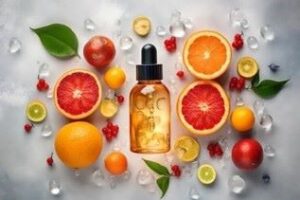
Sunscreen, antioxidants, and caffeine can all be valuable components of a skin care routine. Sunscreen provides protection against harmful UV radiation and reduces the risk of skin cancer and skin aging. This is the easy one to discuss. Caffeine offers anti-inflammatory benefits alongside vasoconstriction, which aids in puffiness. Antioxidants can help combat ROS and promote collagen production through cell turnover. Understanding the scientific research helps put us in the driver’s seat when educating patients about what products can be helpful, those that can be harmful, and those that make claims with no supporting evidence.
References
1 Matta MK, Florian J, Zusterzeel R, et al. Effect of Sunscreen Application on Plasma Concentration of Sunscreen Active Ingredients: A Randomized Clinical Trial. JAMA. 2020;323(3):256–267. doi:10.1001/jama.2019.20747
2 Schalka S, Reis VMS. Sun protection factor: meaning and controversies. An Bras Dermatol. 2011;86(3):507-15.
3 Szymański Ł, Skopek R, Palusińska M, Schenk T, Stengel S, Lewicki S, Kraj L, Kamiński P, Zelent A. Retinoic Acid and Its Derivatives in Skin. Cells. 2020 Dec 11;9(12):2660. doi: 10.3390/cells9122660. PMID: 33322246; PMCID: PMC7764495.
4 Ding J, Kam WR, Dieckow J, Sullivan DA. The influence of 13-cis retinoic acid on human meibomian gland epithelial cells. Invest Ophthalmol Vis Sci. 2013; doi:10.1167/iovs.13-11863, 54(6):4341-4350. Published 2013 Jun 26.


